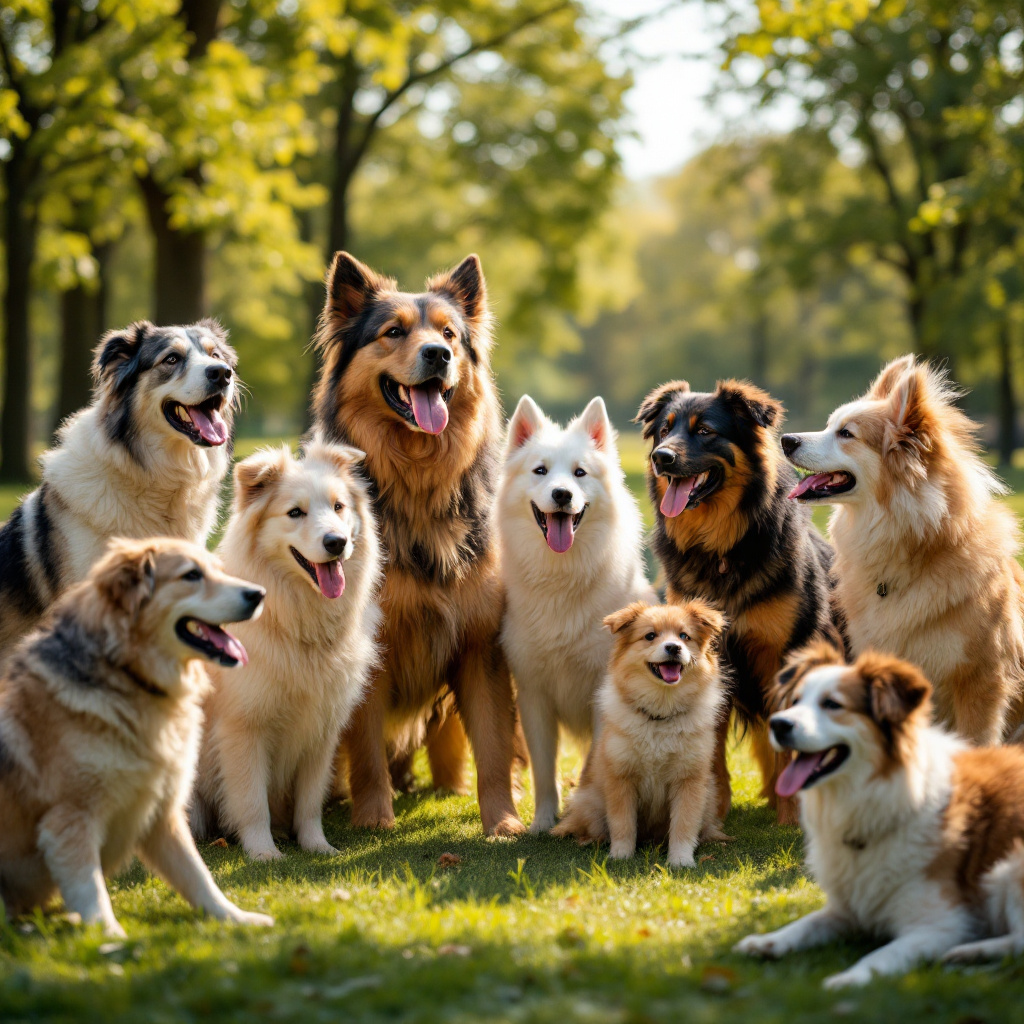Behaviour and temperament of large dog breeds: What to expect
Large dog breeds - many people immediately think of massive, majestic animals that look powerful and imposing. But did you know that these large four-legged friends often have the most gentle and calm dispositions of all dogs? In this article, we delve into the fascinating world of large dog breed behaviour and temperament and discover what makes them such exceptional companions.
The gentle giants: A first overview
Large dog breeds such as the St Bernard, Great Dane or Newfoundland are known for their intimidating size. But don't be fooled - they usually have a heart of gold. Their impressive size is often balanced by a calm temperament. These gentle giants are often incredibly patient and very tolerant, especially with children. But what makes their behaviour so special?
- Love of children: Many large breeds are naturally child-friendly. Their patience and tolerance make them ideal family dogs.
- Gentleness: Despite their size, many of these dogs are gentle and reserved.
- Patience: Large dogs tend to be calm and even-tempered, which makes them calm companions.
- Loyalty: These dogs are incredibly loyal and bond closely with their owners.
Behaviour and temperament: differences between the breeds
Of course, every dog breed has its own peculiarities, and even within the large breeds there are remarkable differences in behaviour and temperament:
1. the Great Dane: the gentle giant
The Great Dane is often known as the Apollo of dogs - mighty in size, but incredibly gentle to handle. This dog breed is known for its:
- Restrained nature: Despite their size, Great Danes are often shy and cautious.
- Quiet character: They are very relaxed and do not tend to bark unnecessarily.
- Kindness: Their gentle nature makes them wonderful family dogs.
2nd St Bernard: The gentle hero
This charming and heroic four-legged friend is known for his rescue missions in the mountains. However, his skills go far beyond this legend:
- Friendliness: St Bernards are extremely friendly and get on well with children.
- Patience and calm: This breed is known for its enormous patience and balance.
- Protective instinct: They have a strong protective instinct, but are not aggressive.
3rd Newfoundland: The swimming saviour
Newfoundlands are not only known for their water rescue talent. Many believe that they are born lifeguards among dogs:
- Gentleness: Their gentle nature makes them ideal companions, especially for families with children.
- Love of water: They are gifted swimmers, a characteristic that makes them perfect for water sports.
- Loyalty: Newfoundlands are known for their absolute devotion to their families.
The interplay between size and behaviour
Large breed dogs need special handling to ensure their behaviour and temperament is well supported. Here are some tips that can help:
- Early socialisation: Start socialisation early to ensure your dog is comfortable in different environments.
- Sufficient outlet: Despite their laid-back nature, large dogs need plenty of exercise to stay healthy and happy.
- Training: Regular and consistent training helps to avoid unwanted behaviour and strengthen the bond between dog and owner.
Making the right choice: Which breed suits you?
If you're thinking about adding a big ball of fur to your life, you should consider which breed best suits your lifestyle. Consider the following questions:
- Do you have enough space for a large dog?
- Are you able to exercise your dog sufficiently?
- Does the temperament of the breed suit your lifestyle?
- Are you ready for the care and effort that comes with a large dog?
Understanding the behaviour and temperament of large dog breeds can help you make a choice that fits harmoniously into your life. Whether a gentle St Bernard, calm Great Dane or loyal Newfoundland - each of these breeds offers unique characteristics that make them valuable companions.
Final thoughts
The behaviour and temperament of large dog breeds often reflects simplicity - they are loyal, calm and offer immeasurable joy. Choosing the right breed can make the difference between a good dog experience and a great one. By understanding these gentle giants and their behavioural traits, you'll be well on your way to finding the perfect companion for your family. So, grab your favourite four-legged friend and enjoy the exciting world of large dog breeds!
FAQs
Which large dog breed is easy to train?
Mastiff: Don't be fooled by its somewhat coarse appearance: Although a Mastiff is more of a large and heavy dog breed, it is a very good-natured and affectionate companion that barks little. Mastiffs are easy to train.
Are big dogs gentler?
Yes, many large dogs are indeed gentle and show an extremely calm temperament. Breeds such as Newfoundlands and St Bernards are known for their gentleness and friendliness, especially towards children. Their reserved nature often makes them first-class family dogs.
Which dog breed has a calm character?
Calm dog breeds that require less exercise include particularly large dogs that are not very energetic despite their size. Examples of this are the Bernese Mountain Dog and the St Bernard. These dogs are known for their calm nature and relaxed behaviour.
Which large dog breeds are child-friendly?
St Bernards and Labrador Retrievers are among the most child-friendly large dog breeds. Their patient and friendly nature makes them ideal companions for families. They tend to be tolerant when dealing with the liveliest offspring.
Do large dogs need a lot of space?
Yes, in general, large dogs need more space than their smaller counterparts. A house with a garden is ideal, but more important is sufficient daily exercise to fulfil their need for movement. Breeds like the Great Dane need enough space to move freely.
Author
-

David is a passionate aquarist with more than 20 years of experience in setting up and maintaining freshwater and saltwater aquariums. He specialises in the biodiversity of aquatic ecosystems, aquascaping and the species-appropriate keeping of aquarium fish. His articles on haustierewissen.de are a treasure trove for aquarium enthusiasts looking for sound advice and creative ideas for their underwater worlds.
View all posts




